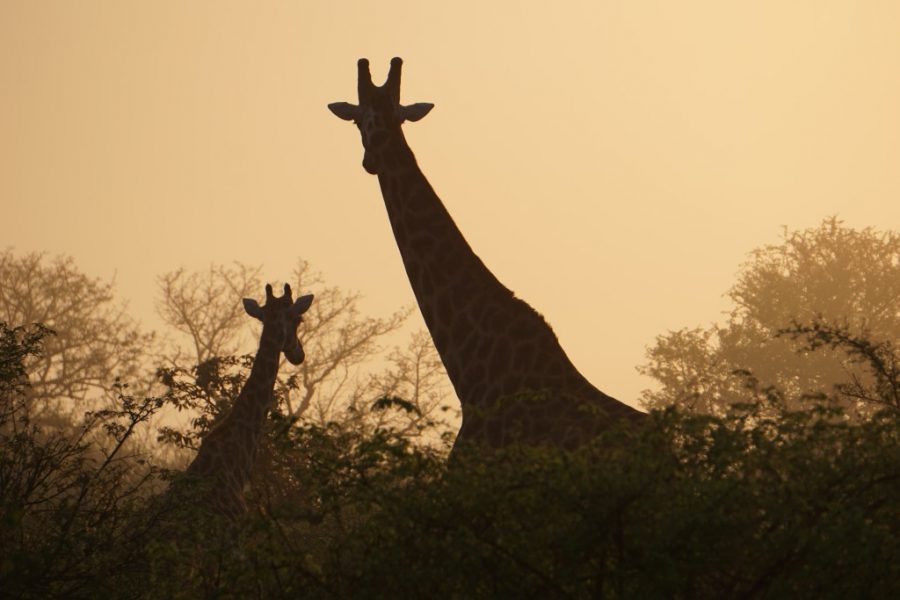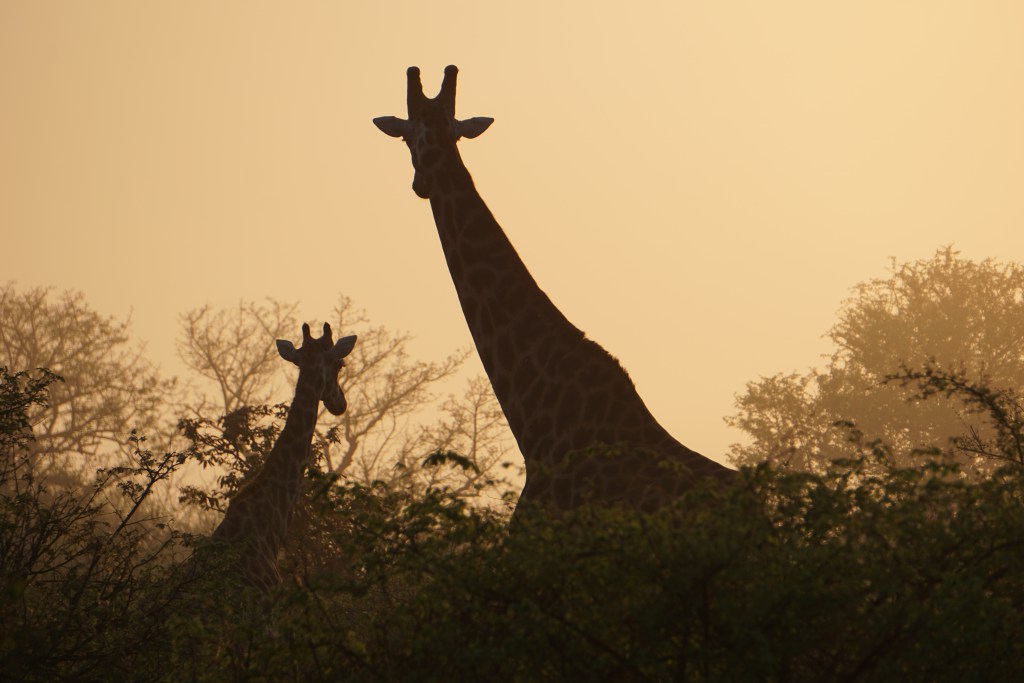
A (Humorous) Guide to Animal Interactions in South Africa
One of the most mind-blowing things about South Africa is its wildlife… writes Phil Maloney. Have you ever watched the National Geographic channel on TV? It’s like that, but with the added thrill of getting malaria (for real – if you go to the Kruger Park, take malaria medication). There are kabillions (rough estimate – […]

One of the most mind-blowing things about South Africa is its wildlife… writes Phil Maloney. Have you ever watched the National Geographic channel on TV? It’s like that, but with the added thrill of getting malaria (for real – if you go to the Kruger Park, take malaria medication).

There are kabillions (rough estimate – I’m not so good with numbers) of different animal species to see, but the Big 5 captivate most visitors. For those of you not familiar with the term, the Big 5 are elephant, cape buffalo, leopard, lion, and rhino.
Some people add hippos to make it the Big 6. The term was coined by early European hunters in the area, who deemed these animals the most dangerous to hunt.
All of these animals will kill the hell out of you if luck isn’t in your favour. I’ve been charged by elephants several times, and once by an angry hippo on the Zambezi River, so if you think it’s just PEOPLE who don’t like me, guess again.
Anyway, because people are people, of course someone at some point in history said, “Those insanely dangerous animals are dope. But know what would be even DOPER? Let’s try to tame some of these motherlovers and let people touch the crap out of them.”
And from there, the animal interaction industry in South Africa was born.
When we first arrived in South Africa, we immediately found out about several places that would let us interact with animals. And not just ANY animals – freaking LION animals.
On literally our first day here, we sped to the Lion Park to overdose on cute. You didn’t think they’d let us pet ADULT lions, did you? That’s ridiculous. More about the adult lions later.
The Lion Park delivered exactly what we were expecting – we got to cuddle and hold a ridiculously adorable lion cub. This is something we didn’t get to do every day in Canada. Cool. Coolcoolcool.
Less than a month later, we heard about the Elephant Sanctuary. Are you kidding me? We’d get to interact with ANOTHER one of the Big 5, and this time, fully grown? Count me in!
We went and got to touch, stand beside, and take pictures with a completely docile giant. We opted not to ride on them, even though that was an option, because we’d heard somewhere that riding on them was kinda bad somehow. Cool. Coolcoolcool.
Here’s the thing though: we screwed up. And here’s why.
You Can Pet A Lion Cub – But You Really Shouldn’t
Have you ever heard the term “canned hunting?” Basically, it’s when docile animals who are accustomed to humans are released into larger enclosures and then “hunted” by people for huge sums of money.
Lions are the primary target of this kind of hunting. And yes, while even a lion who is used to people can handily kill the crap out of a human, they typically don’t have the inherent fear of humans that truly wild lions do, meaning they are much easier to find and shoot.
But these are BIG lions. What does this have to do with petting lion cubs?
Well, those cuddly little cubs at petting facilities usually end up getting their asses shot. There’s the connection. Big lions are grown out of little lions. There needs to be a constant supply of big lions, because science generally dictates that something can be killed only once.
Luckily, there is no shortage of tourists who are willing to pay to hang out today with tomorrow’s target.
Dang.
And before I come across as some kinda sissy, know that I support hunting. Real hunting. Free range hunting. You know, where an animal isn’t accustomed to humans and can escape (I know that some people will send me angry messages for that, but whatever. It’s the internet. You’ll find something else that will outrage you even more in less than two minutes).
But raising lions for hunting is all kinds of problematic. The cubs are removed from their mothers far too early. The mothers are treated like breeding machines, pumping out cubs far more often than they would in the wild. And when they dry up and can’t have any more cubs, guess what happens? That’s right, they get to live out their lives peacefully on a retirement farm. Hahahaha.
Actually, they promptly get sent off for discount hunts, because just like in the human world, females aren’t nearly as valuable as males.
And let’s see… what else? Oh, the cubs are traumatised because they aren’t able to relax properly. There is no scientific evidence that handling lions contributes to conservation.
Captive bred lions aren’t able to be released into the wild. And there is no evidence to support the notion that allowing people to shoot captive-bred lions prevents wild lions from being shot.
The list goes on and on. But don’t take my word for it – you can read about it yourself here, here, and here.
What About Elephant Interactions Though?
Ya, what ABOUT those. Certainly THEY aren’t part of the canned hunting industry. Correct – they aren’t! Instead, the elephants that you get to touch and ride are subjected to physical torture at LEAST to get them trained, then emotional torture for the rest of their long, long lives. Cool. Coolcoolcool.
Know why elephants let us touch them and ride them?
It’s not because they’re domesticated or tame. It’s because they’re scared of getting hurt. In no way do these animals get to exhibit normal behaviour, which is to ignore us or to trample the begeebers out of us.
I could go on and on, but several websites do that much better than I could. You can read more about it here, here, and here.
We had friends visiting us in October. The idea of an elephant interaction came up, and my 7-year-old son said: “but it’s SO much better to see them in the wild where they’re happier!” If a young kid can realise this, so can we.
I mean, you COULD pay the money to interact with a sad, abused elephant; or you could go see them in their truly natural state, which I can tell you from experience is MUCH more exciting.
So Now What?
Still want to see animals? No problem. The Kruger National Park is chock full of ’em. So is Pilanesberg. And there are tons of other places to see animals in their natural habitat- Google can help direct you.
If you still want to see captive big cats, there are other options for you. Both Panthera Africa and Big Cat Sanctuary Lionsrock run true rescue operations. You just won’t be able to touch the cats.
And as if all that isn’t enough to convince you, TripAdvisor has now stopped selling tickets to attractions that let tourists interact with wild animals, and even Tourism South Africa has openly condemned animal interactions.
To wrap things up, here’s a couple of lists for you:
Animals You Should Interact With
- Dogs
- Cats
- Your kids (sometimes)
- Bunnies
Animals You Shouldn’t Interact With
- Lions
- Sharks
- T-Rexes
- Your kids (sometimes)
- Elephants
- Most of them
So yes, like I said, we screwed up. I can’t change the fact that I contributed to the animal interaction industry, but I can definitely not do it again. And I can have better experiences seeing these animals in the wild, which is exactly what I did with all of the below pictures. Enjoy!








(If you liked this post, don’t forget to sign up to Phil’s mailing list here so you never miss another post again! While you’re at it, you can like the Maple and Marula Facebook page here, the Maple and Marula Instagram here, and follow Maple and Marula on Twitter here)